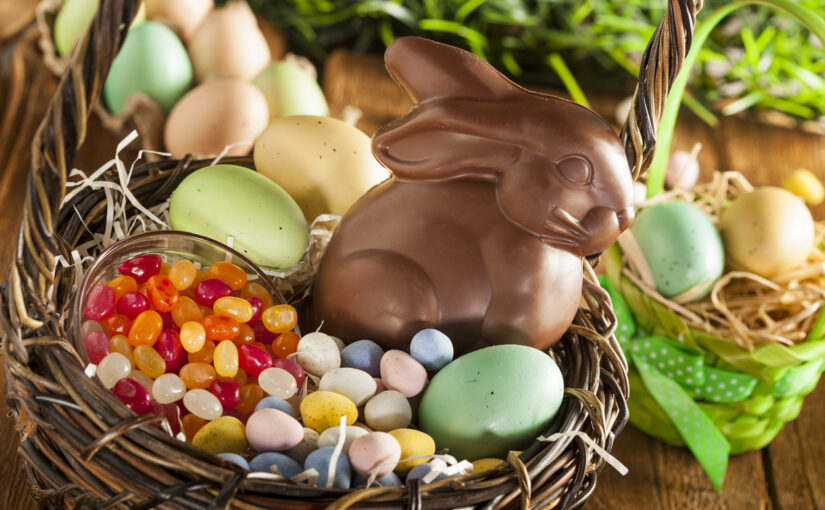It’s hard to compete with Halloween when it comes to candy, but every year, Easter gives October 31 a run for its money.
In 2018, we as a nation bought more than $2 billion worth of marshmallow chicks, jelly beans and chocolate eggs and bunnies. There’s no reason to think Americans won’t repeat that pattern this year. (At least we in the Bucks County chocolate molds world hope they will.)
But how did this happen? How is it that Easter – which began as a religious celebration of new life and rebirth – become a reliable source of revenue for candy makers?
It’s time for one of our candy-related history lessons. Let’s look at the connection between Easter and Easter candy.
The first Easter
The first Christians marked the Resurrection of Jesus in the springtime, typically around the same time as the Jewish Passover observance.
In the 6th century, Pope Gregory dispatched a group of monks to what is now England in hopes of bringing Christianity to the ancient Britons.
Part of this involved letting the Britons keep their seasonal festivals, but with a Christian twist. As time went on, those feasts became less about, say, the harvest and more about Christian traditions.
One of those Briton feasts was a celebration of Eostre, a goddess they typically honored around the same time of year when Christians would mark the Resurrection, which, according to legend, is where we get the name “Easter.”
The Easter Bunny comes to America
Obviously, the Easter Bunny doesn’t figure into the Christian Easter tradition, but he’s still a key part of the holiday. And it’s not just about using him to sell candy or Easter baskets.
Rabbits are an ancient symbol of fertility and life. In Germany, people told the legend of the Osterhase, a mythical hare that laid eggs.
Kids in Germany would fashion nests for the Osterhase, a tradition that crossed the Atlantic when German settlers arrived in Pennsylvania.
Over the years, the nest-making tradition evolved. Instead of nests, kids would make baskets. And instead of delivering just eggs, the hare would drop off candy and small gifts.
Why eggs?
So, why are eggs – chocolate or otherwise – a part of Easter? It might have something to do with Lent. In an earlier era, eggs were off-limit during the Lenten season, so painting and then eating them when Lent was over would mark an end to that period of fasting and penance.
Fast-forward to the 1800s. Chocolate making has become an art, while the Industrial Revolution has allowed chocolatiers to produce things in bulk.
The first chocolate molds – the ancestors to our Bucks County chocolate molds – showed up in the 1830s, allowing people to create chocolate bunnies and chocolate eggs.
Another Easter favorite, jelly beans, were first produced in the 1800s and gained wider popularity in the 1860s, when a Boston candy maker started petitioning people to send them to Union troops during the Civil War.
Here at Stutz, our history doesn’t go back quite that far, but we have been making homemade chocolate for more than 80 Easters.
Our Bucks County chocolate molds include chocolate eggs, chocolate bunnies and other treats. Shop our online store or visit one of our three stores to find a treat your kids will enjoy this Easter.
